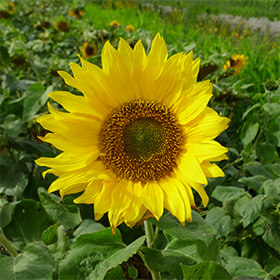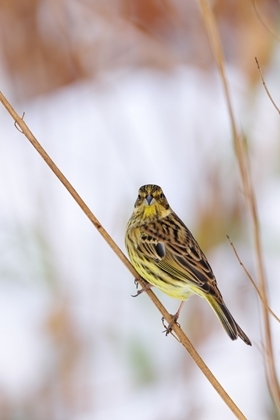 By Neil Harris, Kings Crops
By Neil Harris, Kings Crops
With winter well into its stride and the likelihood of harsher weather to come, farmland birds will be in need of all the help they can get from growers. Getting birds through the ‘hungry gap’ and into good condition for the breeding season gives them the best opportunity to successfully raise their young and provide a platform for farmland bird numbers to grow.
Provision of wild bird seed mixes is a key element in helping farmland birds to thrive. Most of the species experiencing a fall in numbers are ‘granivorous’ birds, that is to say that they feed primarily on seeds and grain. Wild bird seed mixes provide a winter supply of these food sources by planting crops which provide large quantities of seed attractive to many bird species.
 These crops include cereals, brassicas, millets, quinoa, linseed and sunflowers. Growing a mixture of these crops ensures seed provision over the longest period possible and a food source that is attractive to the widest range of birds.
These crops include cereals, brassicas, millets, quinoa, linseed and sunflowers. Growing a mixture of these crops ensures seed provision over the longest period possible and a food source that is attractive to the widest range of birds.
If the right mixture is chosen, wild bird seed mixes can also provide effective game covers. A mixture containing millets, cereals and linseed can be grown alongside maize or undersown in maize to enable the same post emergence agronomy to be used on both crops.
A kale based wild bird mix with several species of brassica and linseed provides huge quantities of seed, stands well throughout the shooting season, and enables pre emergence control of broad leaved weeds.
The drawback with wild bird seed mixes is that they tend to run out of steam during January in terms of seed provision, whilst the ‘hungry gap’ lasts into April. Supplementary winter feeding of small seeds like canary seed, millets, linseed and quinoa mixed with wheat and oilseed rape can extend the seed provision until the hungry gap is over.
 Spinning this mix from January until late April onto hard tracks near areas of wild bird seed mix will attract large numbers of birds including linnets, yellowhammers, chaffinches, reed bunting, tree sparrow, dunnock and corn bunting.
Spinning this mix from January until late April onto hard tracks near areas of wild bird seed mix will attract large numbers of birds including linnets, yellowhammers, chaffinches, reed bunting, tree sparrow, dunnock and corn bunting.
Both wild bird seed mixes and supplementary winter feeding can be funded through stewardship schemes with very attractive grant rates provided by Natural England.
Whether you choose to implement these options through a stewardship scheme or off your own back, you will soon notice how many more birds are choosing your farm to make their home. By taking part in the Big Farmland Bird Count you will also be able to measure the effect of the work you are doing to support farmland birds and see how they are faring.
Don’t let your efforts go unrecorded - join the Big Farmland Bird Count to see how well your birds are doing.
Sign up >